Orchids
There are three different types of orchid growing on the Halsey Field – The Bee Orchid (Ophrys apifera), The Common Spotted orchid (Dactylorhiza fuchsii) and the Pyramidal orchid (Anacamptis pyramidalis)
Orchids have several life stages. The first stage is the non-germinated orchid seed, the next stage is the protocorm, and the following stage is the adult orchid. Orchid seeds are very small 0.35mm to 1.50mm long), spindle-shaped, and have an opening at the pointed end.[5] Each seed has an embryo that is undifferentiated and lacks root and shoot meristems.[3] An orchid seed does not have enough nutritional support to grow on its own.[2] Instead, it gets nutrients needed for germination from outside sources. In nature, the nutritional support comes from a fungal partner.[4] When the orchid seeds geminate, they form seedling structures called protocorms which consist of parenchyma cells.[6][3] Infected protocorms tend to develop an active meristem within a few days.[7] In the adult stage, many orchids have a small amount of thick unbranched roots which results in a root system with a small surface area that is favourable to potentially mycotrophic tissue.[8
The Bee Orchid gets its name from its main pollinator - a species of bee - which is thought to !have driven the evolution of the flowers. To attract the bees that will pollinate the plant, it has flowers that mimic their appearance. As the bees attempt to mate, they land on the velvet-textured lip of the flower and the pollen is transferred. Sadly, the right species of bee doesn't occur in the UK, so Bee Orchids are self-pollinated here. They flower on dry, chalk and limestone grasslands from June to July.
Like many orchids, this plant has a complicated life cycle involving fungus, and can take up to seven years to produce a flower.
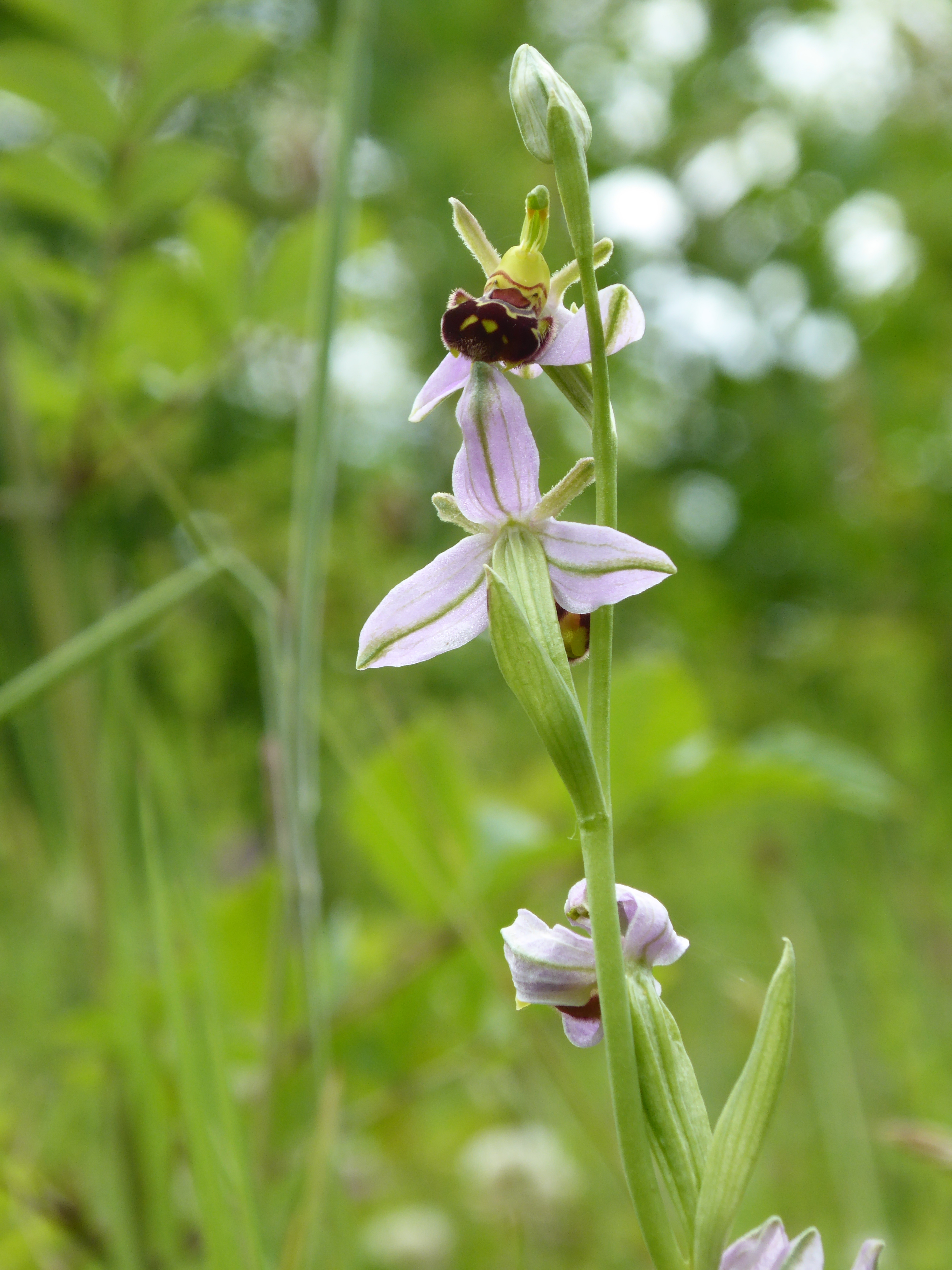
The Pyramidal Orchid is a highly distinctive wildflower with a pyramid shaped head of bright pink flowers. The colour, however, can range from deep magenta to pure albino white. Occasionally the individual flowers in the spike occur upside down. This orchid grows in abundance on Halsey field, and is an important nectar source for moths and butterflies. Like many orchids, it requires a specific fungus to be present in the soil in order to bloom.

The Common Spotted Orchid is UK's most common orchid (as its name suggests) and grows particularly chalk and limestone downs. The flowers themselves can vary from deep to light pink and have distinctive darker pink to purple spots and stripes on their three-lobed lips. The flowers are densely packed in short, cone-shaped clusters. The leaves are marked with wide oval-shaped dark spots. They form a rosette at ground level before flower spikes appears. Narrower leaves sheath the stem. This orchid prefers a damper habitat than the Bee orchid and is found in just one patch in Halsey Field.
Other important flowering plants in Halsey field
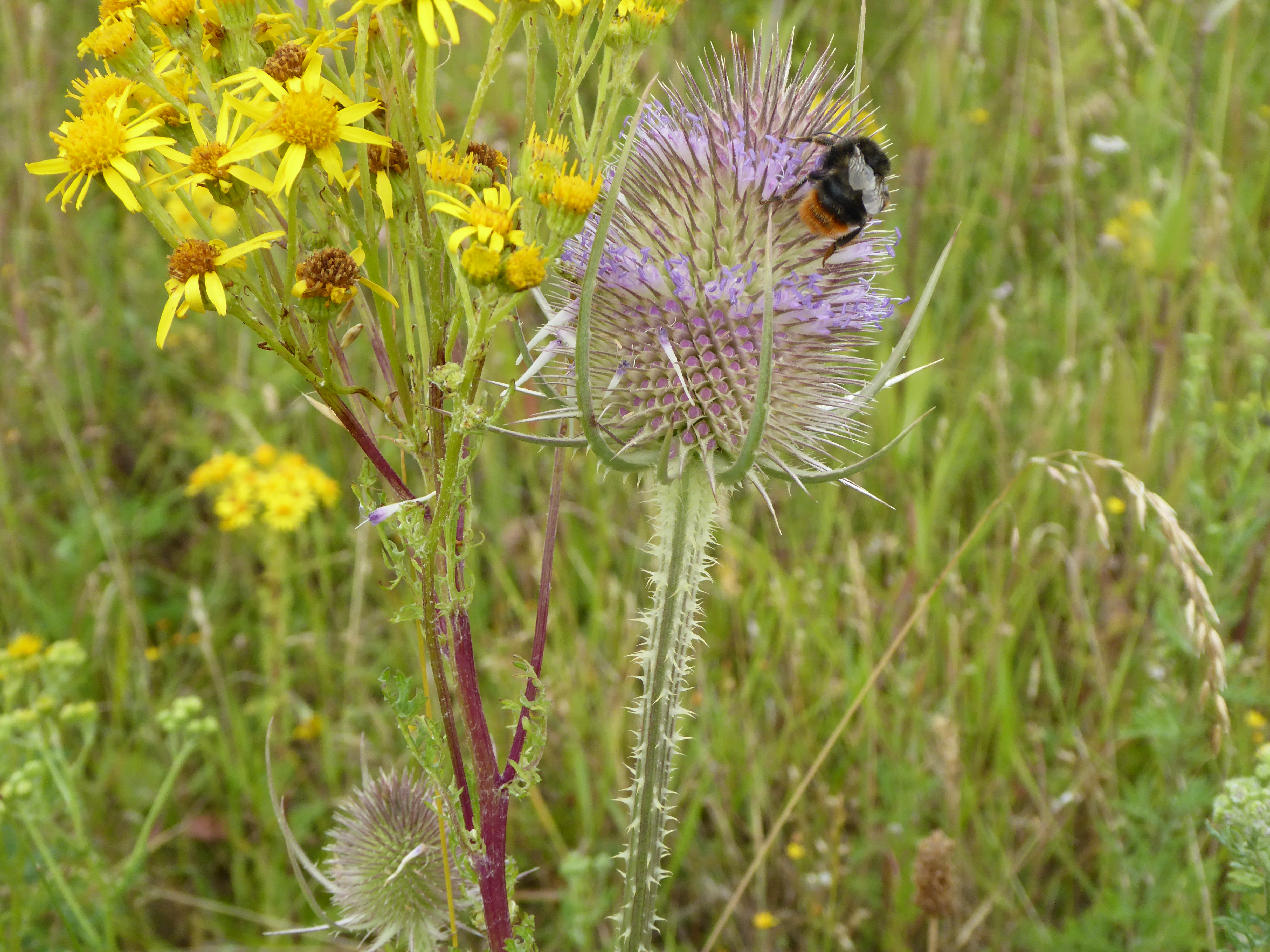
Teasel with Red-tailed Bumblebee.
Teasels are loved by bees for their nectar and their tiny seeds are eaten by Goldfinch. This plant flowers in July and August
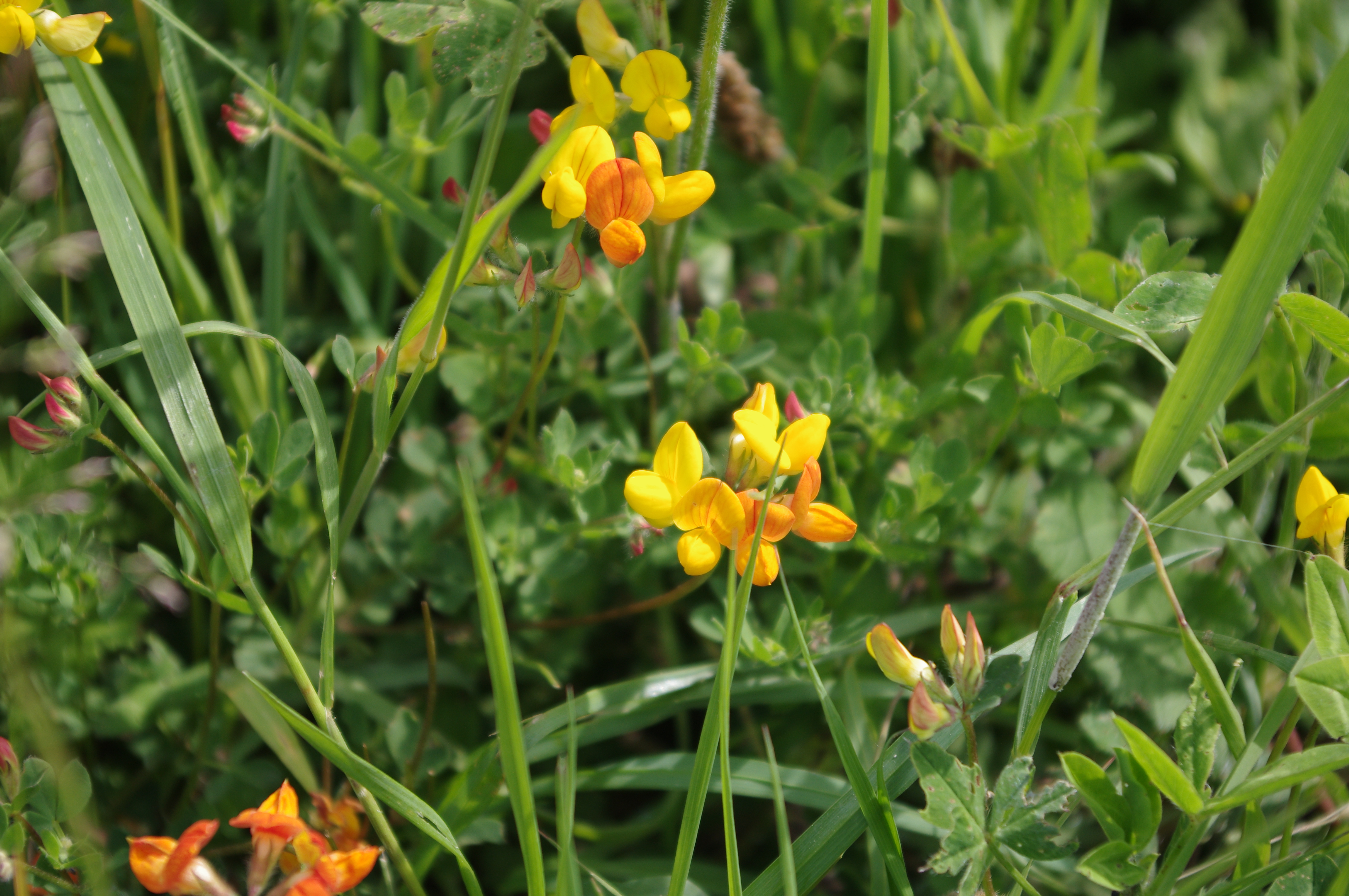
Bird's foot trefoil is an important plant for butterflies, and the Common Blue butterfly, the Dingy Skipper, Green Hairstreak and the Six-spot burnet all lay their eggs on its leaves. It is in flower from June until September.
Trees and bushes
There are many flowering trees on the Halsey field, which makes it an ideal habitat for birds and small mammals.
Species include: Spindle (Euonymus europaeus), Dogwood (Cornus), Blackthorn (Prunus spinosa), Hawthorn (Crataegus), Wild Cherry (Prunus avium), and Wild Privet (Ligustrum vulgare).
Spindle
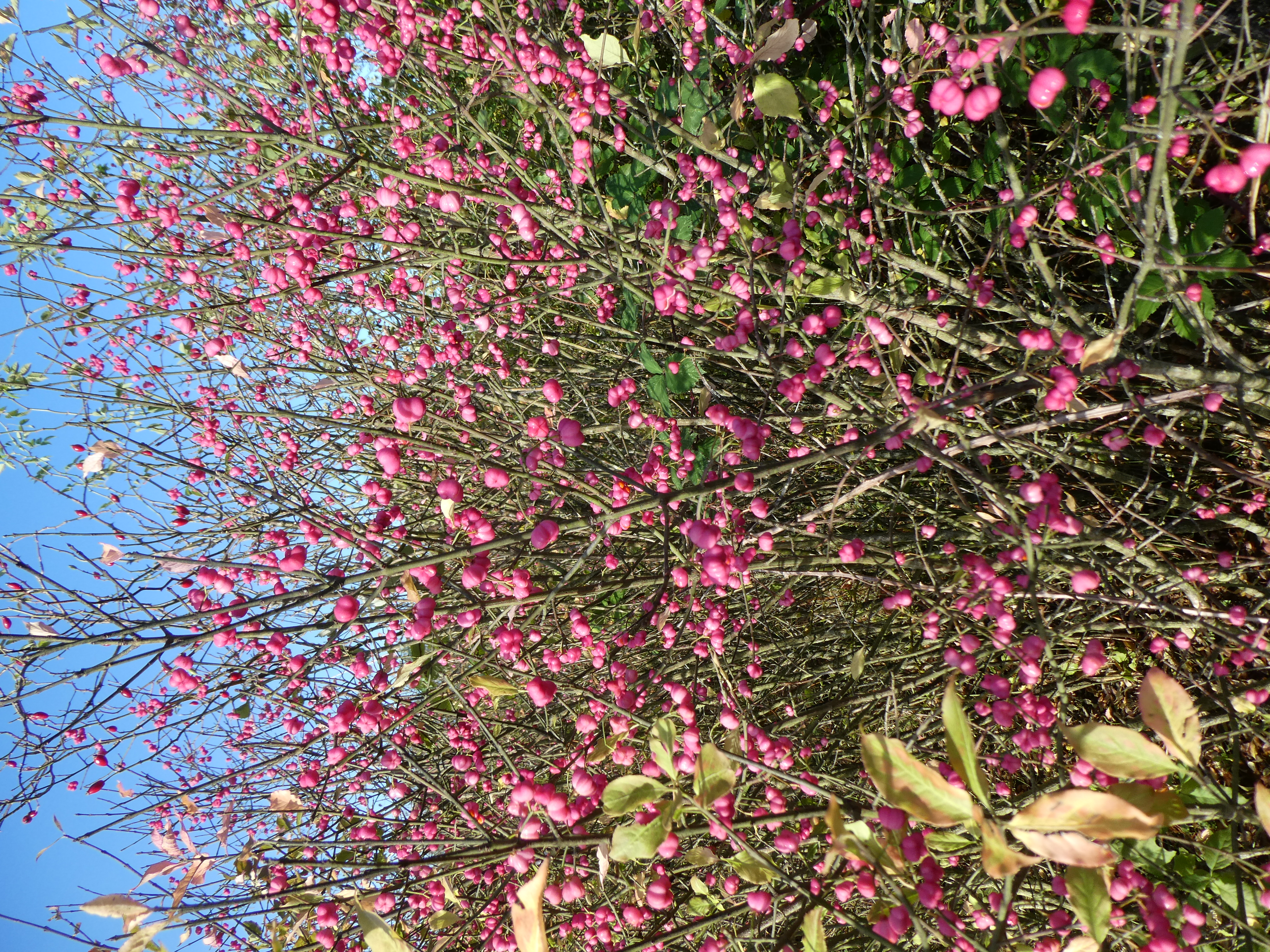

Spindle is most striking in the autumn when its narrow, oval leaves turn reddish-orange and clusters of bright pink-and-orange berries hang from its twigs. These berries provide food for all kinds of creatures, including mice, birds and even Red Foxes, but are poisonous to us.
Chalk grassland species introduced to Halsey Field
For some time we monitored the flora on Halsey Field so that we knew exactly which species were growing there, but after a few years we began to add to the diversity by introducing some chalk grassland species which are found in the local area.
These include: Field Scabious, Wild Basil, Marjoram, Greater Knapweed, Kidney Vetch and Yellow Rattle. We introduced Yellow Rattle which feeds on the roots of grasses to subdue the growth of coarse grasses such as False Brome in order to make space for more wild flowers, and Kidney vetch to attract Small Blue butterflies to the site. All these plants are an excellent source of nectar and pollen for insects.
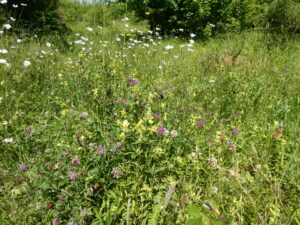
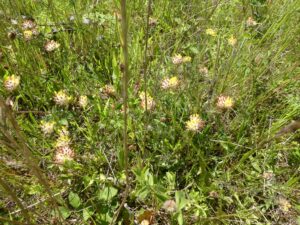
Yellow Rattle, Red Clover and Oxeye Daisies Kidney Vetch
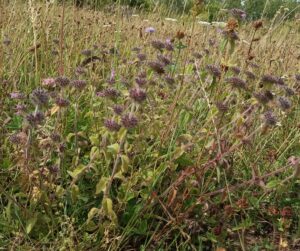
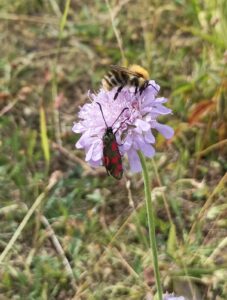
Wild Basil Six-spot Burnet and bee on Scabious
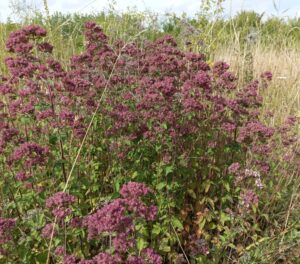
Marjoram

